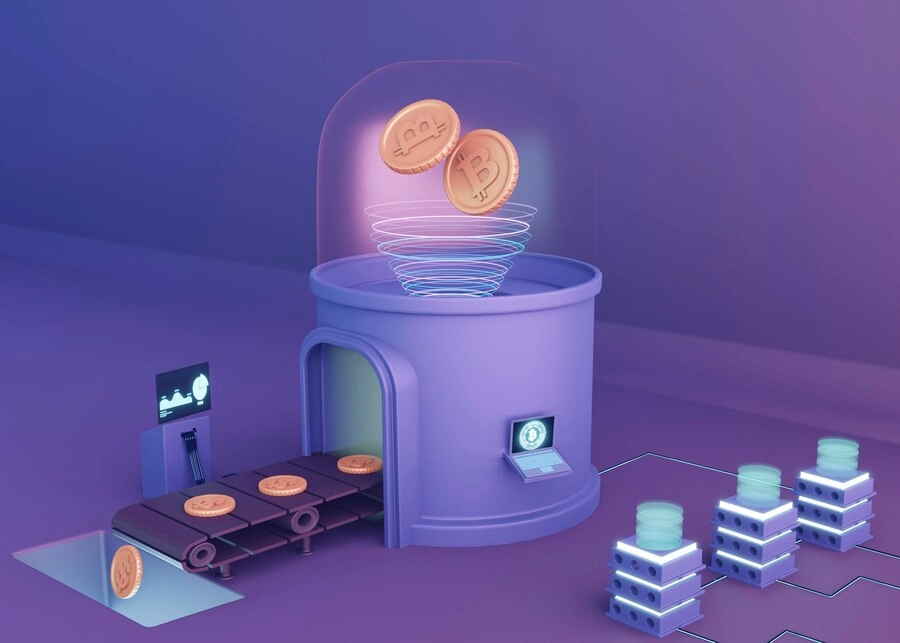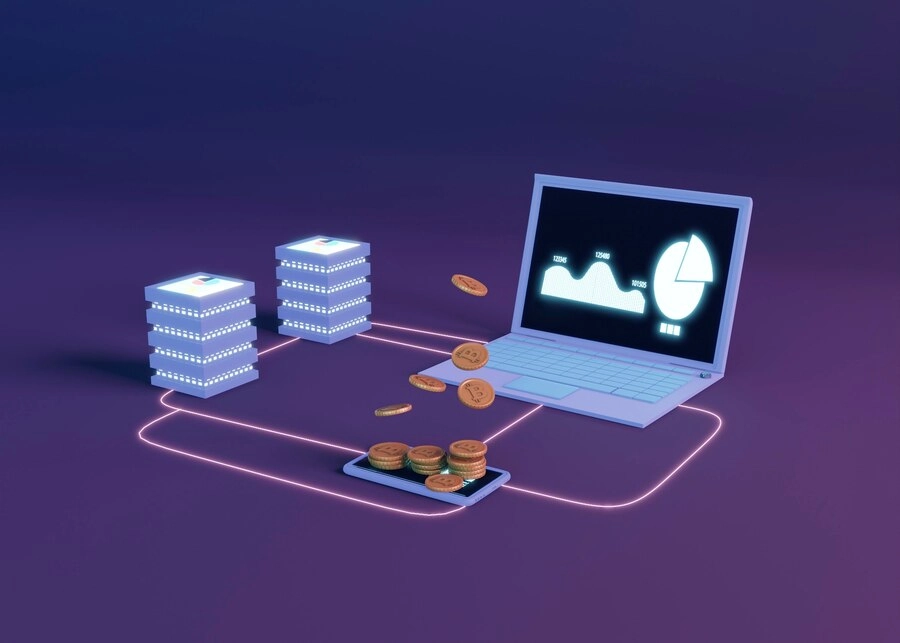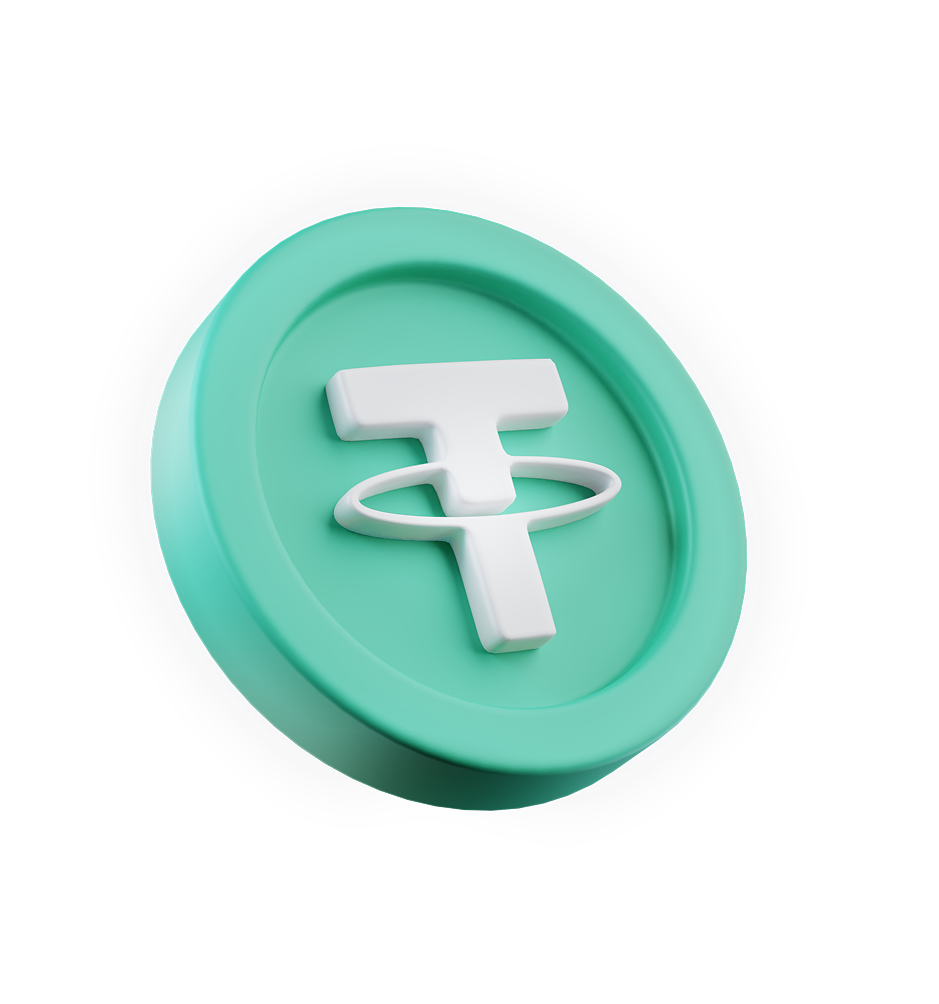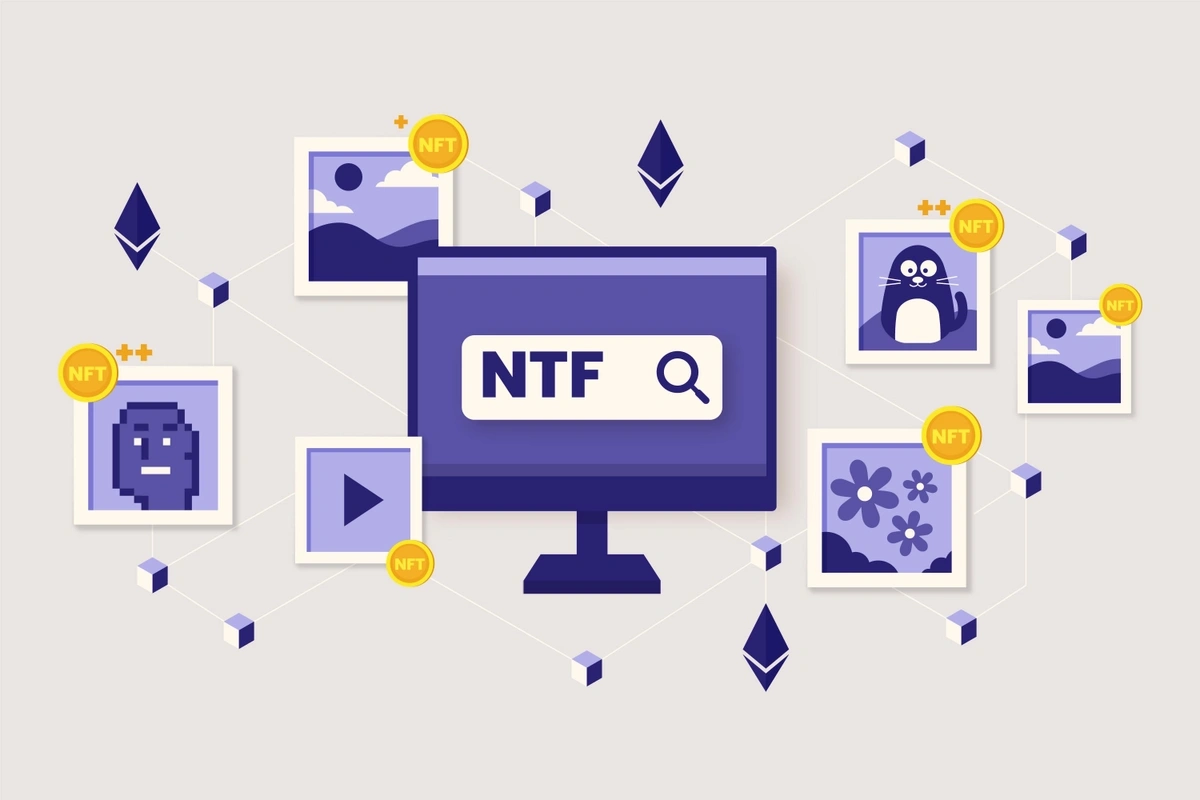Are you looking for ways to make passive income from crypto or put your investment portfolio to work? Understanding the difference between mining and staking is probably a good place to start. In this blog, we compare staking vs. mining, analyzing their energy consumption, security mechanisms, and profitability. You’ll have already heard of both of them, but we’ll break down how they work, their risks and rewards, and which might be best for you.
What is Cryptostaking?
Crypto staking is a process used in Proof of Stake (PoS) blockchain networks where participants lock up a certain amount of cryptocurrency to support the network's operations, such as validating transactions and securing the network. In return, participants earn cryptocurrency rewards.
How Staking Works
Step 1. Locking Funds
Participants, known as validators, lock up (or stake) a certain amount of their cryptocurrency in a special wallet. This means the cryptocurrency is set aside and cannot be used for other transactions.
The staked amount acts as a commitment to the network, showing that the validator has a vested interest in maintaining the network's integrity. It's like a security deposit that ensures they will act honestly.
Step 2. Block Validation Process
The blockchain network uses an algorithm to select validators for creating new blocks and validating transactions. This selection is often influenced by the amount of cryptocurrency staked; the more you stake, the higher your chances of being selected.
When selected, the validator’s software or app automatically checks transactions to ensure they follow the rules (e.g., the sender has enough balance). Valid transactions are bundled together into a new block then the validator's software sends the new block to the network. At this point, other validators on the network automatically verify the new block. If it is valid, it gets added to the blockchain.
Step 3. Earning Rewards
Validators receive rewards in the form of additional cryptocurrency for their work in validating transactions and creating new blocks. These staking returns come from transaction fees and newly minted coins. The amount of rewards a validator receives is proportional to the amount of cryptocurrency they have staked based on the agreed staking interest rate. More stake generally means higher rewards.
Step 4. Slashing
Slashing is a penalty mechanism. If a validator behaves maliciously (e.g., approving fraudulent transactions) or fails to validate transactions correctly, they lose a portion of their staked cryptocurrency. This ensures that validators have a strong incentive to act in the network's best interest, as they risk financial loss if they don’t.

Top Cryptocurrencies for Staking by Market Cap
- Ethereum (ETH)
- Solana (SOL)
- Cardano (ADA)
- Avalanche (AVAX)
- Sui (SUI)
- Aptos (APT)
- Celestia (TIA)
- Polkadot (DOT)
Source: Staking Rewards
If you’re looking for a secure wallet with staking capabilities, it’s worth checking out Zert. It allows users to stake various cryptocurrencies directly from the wallet to earn rewards.
Advantages of Staking
Energy Efficiency
Staking does not rely on computational power, making it significantly more energy-efficient compared to mining. This lower energy consumption can lead to reduced operational costs and a smaller environmental footprint.
Accessibility
Staking generally requires less technical knowledge and investment in hardware. Participants only need to hold and lock up a certain amount of cryptocurrency, making it easier for more people to participate and support the network.
Network Security
By incentivizing participants to lock up their funds, staking encourages long-term investment and commitment to the network. This can help stabilize the cryptocurrency's value and enhance network security, as validators are economically motivated to act honestly.
Passive Income
Staking allows participants to earn rewards passively. By simply holding and staking their cryptocurrency, participants receive regular rewards, providing a steady income stream without the need for active management.
Risks of Staking
Slashing Risks
Validators risk losing a portion of their staked assets (slashing) if they act maliciously or fail to validate transactions correctly. This penalty is intended to disincentivize bad behavior but can result in significant financial loss for validators.
Liquidity
Staked assets are often locked up for a specific period, reducing liquidity. This means that participants cannot access or trade their staked funds during this lock-up period, potentially missing out on other investment opportunities.
Market Volatility
The value of the staked cryptocurrency can fluctuate due to market conditions. If the market value drops significantly, the rewards from staking might not be sufficient to cover potential losses, affecting the overall profitability.
Centralization Risks
Large holders of the cryptocurrency can have disproportionate influence on the network by staking more coins. This concentration of power can lead to potential centralization, undermining the decentralized nature of the blockchain.
What is Cryptocurrency Mining?
Crypto mining is a process used in Proof of Work (PoW) blockchain networks where participants use computational power to solve complex mathematical problems. This process secures the network, validates transactions, and adds new blocks to the blockchain. Miners are rewarded with new cryptocurrency coins for their efforts.

How Mining Works
Step 1: Collecting and Verifying Transactions
Miners use mining software to automatically scan the mempool for pending transactions. The software verifies each transaction by checking the sender's balance and ensuring the transaction signatures are valid, preventing double-spending. Verified transactions are then bundled together into a candidate block, which is prepared for the next step.
Step 2: Solving Mathematical Problems (Proof of Work)
Once transactions are bundled, the mining hardware (such as ASICs) takes over. The hardware runs continuous computations to solve a cryptographic puzzle. This puzzle requires significant computational effort and is designed to be difficult to solve but easy to verify. The process is automated, with the mining software managing the computations. The first miner to solve the puzzle earns the right to add their candidate block to the blockchain.
Step 3: Broadcasting and Consensus
After solving the puzzle, the mining software automatically broadcasts the new block to the network. Other nodes and miners on the network receive the block and verify its validity, ensuring it follows all network rules and contains valid transactions. If the block is valid, it is added to the blockchain, maintaining the ledger's integrity.
Step 4: Earning Rewards
When the new block is accepted and added to the blockchain, the miner who solved the puzzle receives a block reward. This reward consists of newly minted cryptocurrency and transaction fees from the transactions included in the block. The reward distribution is automated, with the rewards being credited to the miner's wallet. The competitive nature of mining, where miners race to solve the puzzle, ensures the network remains secure and decentralized.
Although this sounds labor intensive, mining is all done by computational power, meaning it requires no input from the miner, just setting up and maintaining the mining rig.
Popular Cryptocurrencies for Mining
- Bitcoin (BTC) (apparently, there are around 1 million Bitcoin miners)
- Ethereum Classic (ETC)
- Litecoin (LTC)
- Bitcoin Cash (BCH)
- Monero (XMR)
- Zcash (ZEC)
- Dash (DASH
- Dogecoin (DOGE)
Advantages and Risks of Mining Cryptocurrency
Advantages of Mining
Network Security
Mining provides robust security through computational work. The high energy and hardware costs make it difficult for any single entity to attack the network.
Decentralization
The competitive nature of mining helps maintain a decentralized network, as it prevents any single entity from easily gaining control.
Profitability
Mining can be profitable if done efficiently, taking into account factors like hardware efficiency, electricity costs, and cryptocurrency prices.
Risks of Mining
High Costs
Mining requires significant investment in specialized hardware (e.g., ASICs) and access to cheap electricity. These high costs can be a barrier to entry for many participants.
Energy Consumption
Mining is energy-intensive, leading to high operational costs and environmental concerns.
Market Volatility
The profitability of mining can be affected by the volatility of cryptocurrency prices. A significant drop in prices can make mining less profitable or even result in losses.
Centralization Risks
The high costs associated with mining can lead to centralization, where large mining pools or entities dominate the network, potentially reducing its decentralized nature.

Crypto mining vs. Staking: Which is Better?
Staking is generally the better investment strategy for most individuals due to its lower energy costs, minimal technical requirements, and steady passive income. It is more accessible and environmentally friendly. Mining, while potentially more profitable, requires significant investment in specialized hardware and cheap electricity, along with higher operational costs and risks. For those new to cryptocurrency or with limited resources, staking offers a simpler and more cost-effective way to earn rewards.
FAQs
How does staking secure the network?
Staking secures the network by requiring validators to lock up cryptocurrency as collateral, incentivizing them to act honestly because they risk losing their staked assets if they act maliciously.
What is the difference between proof of stake and proof of work?
PoS and PoW are both decentralized consensus mechanisms. Proof of Stake (PoS) selects validators based on the amount of cryptocurrency they stake, making it energy-efficient and reliant on economic incentives. Proof of Work (PoW) involves miners solving cryptographic puzzles using computational power, making it energy-intensive and reliant on computational effort for security.
For a detailed explanation, read Proof of Stake vs. Proof of Work: What’s the Difference?
How do small miners and stakers make money?
Small miners make money by joining mining pools to share computational power and rewards. Similarly, small-time stakers make money by joining staking pools to combine their staked amounts and share the rewards proportionally.








